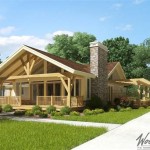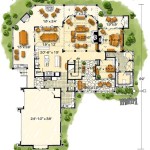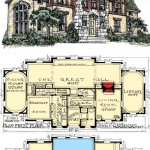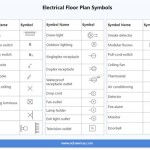Dog House Woodworking Plans: Providing Comfort and Safety for Your Furry Friend
Dog owners understand the importance of providing their loyal companions with a comfortable and safe place to rest and retreat. Building a dog house from scratch using woodworking plans is a rewarding project that allows you to customize the design and ensure the highest standards of craftsmanship. In this article, we will guide you through the process of selecting suitable woodworking plans, gathering the necessary materials, understanding the construction techniques, and putting it all together to create a sturdy and cozy dog house. ### 1. Choosing the Right Woodworking Plans The first step is to select woodworking plans that align with your dog's size, preferences, and the available space. Here are some factors to consider: -Size:
Measure your dog's height and length to determine the appropriate size of the dog house. You want it to be spacious enough for your dog to move around comfortably, but not too large that it becomes drafty or difficult to maintain. -Design:
Dog houses come in various designs, including traditional A-frame, gable, and barrel styles. Consider your dog's personality and preferences. For example, if your dog enjoys basking in the sun, you might want to incorporate a raised porch or a sloped roof for better drainage. -Skill Level:
If you're a beginner in woodworking, choose plans that provide detailed instructions and diagrams. Some plans are designed for experienced woodworkers who have access to specialized tools and techniques. ### 2. Gathering the Necessary Materials Once you have selected the woodworking plans, gather the materials listed. This typically includes: -Wood:
The type of wood you choose depends on your budget and the desired durability of the dog house. Common options include plywood, cedar, and pine. -Hardware:
This includes nails, screws, hinges, and any other fasteners specified in the plans. -Insulation:
To provide warmth and protection from the elements, consider using insulation materials such as foam board or fiberglass batting. -Weatherproofing Materials:
To protect the dog house from rain, wind, and snow, you will need roofing materials (such as asphalt shingles or metal roofing), a sealant for the wood, and weatherstripping for the door. ### 3. Understanding the Construction Techniques Before starting the build, familiarize yourself with the construction techniques used in the woodworking plans. Here are some common techniques you may encounter: -Framing:
The frame provides the basic structure of the dog house. It is typically made from 2x4 or 2x6 lumber, and the joints are secured with nails or screws. -Sheathing:
The sheathing covers the frame and provides a surface for attaching the siding or roofing materials. It is often made from plywood or oriented strand board (OSB). -Siding:
The siding is the exterior finish of the dog house. You can use materials like wood siding, vinyl siding, or corrugated metal. -Roofing:
The roof protects the dog house from rain and snow. Common roofing materials include asphalt shingles, metal roofing, or tar paper. ### 4. Building the Dog House With the plans, materials, and construction techniques in mind, you can now begin building the dog house: 1.Prepare the Foundation:
Start by creating a level and stable foundation for the dog house. This can be a concrete slab, a wooden platform, or even cinder blocks. 2.Construct the Frame:
Assemble the frame according to the woodworking plans. Make sure the joints are secure and the frame is square. 3.Attach the Sheathing:
Cover the frame with sheathing material, ensuring that it is properly attached and there are no gaps. 4.Install the Siding:
Apply the siding material to the exterior of the dog house, following the manufacturer's instructions. 5.Build the Roof:
Construct the roof according to the plans, considering the pitch and drainage. Secure the roofing material properly. 6.Insulate the Dog House:
If desired, install insulation material inside the walls and roof to provide warmth and protection from the elements. 7.Add the Finishing Touches:
Install the door, windows (if included in the plans), and any other decorative or functional elements. ### 5. Maintaining and Caring for the Dog House To ensure the longevity and comfort of the dog house, regular maintenance is essential: -Clean the Dog House Regularly:
Remove dirt, debris, and pet hair from the inside of the dog house. -Inspect for Damage:
Check the structure, insulation, and roofing material for signs of damage or wear and tear. Repair any issues promptly. -Treat the Wood:
Apply a sealant or waterproof coating to the wood to protect it from moisture and rot. -Provide Bedding:
Place a comfortable bed or blanket inside the dog house to make it cozy and inviting for your dog. Building a dog house using woodworking plans is a fulfilling project that allows you to create a customized and durable shelter for your furry friend. By carefully selecting the plans, gathering the necessary materials, understanding the construction techniques, and following the steps outlined above, you can create a dog house that provides comfort, safety, and protection from the elements.:strip_icc()/Beautiful-Pallet-Dog-House-with-Veranda-1-5a202f90494ec90037893a82.jpg?strip=all)
14 Free Diy Dog House Plans Anyone Can Build

Build A Cedar Doghouse

Simple Diy Dog House Plans Easy

Print Dog House Plans 1

How To Build A Custom Insulated Dog House Ron Hazelton
:strip_icc()/IMG_2589-5a202f1c7d4be800191a3845.jpg?strip=all)
14 Free Diy Dog House Plans Anyone Can Build

20 Free Diy Dog House Plans Care Com Resources

Large Traditional Style Dog House Plans

14 Diy Dog Houses How To Build A House Plans Blueprints

Dog House Plans Free Diy Projects Construct101








